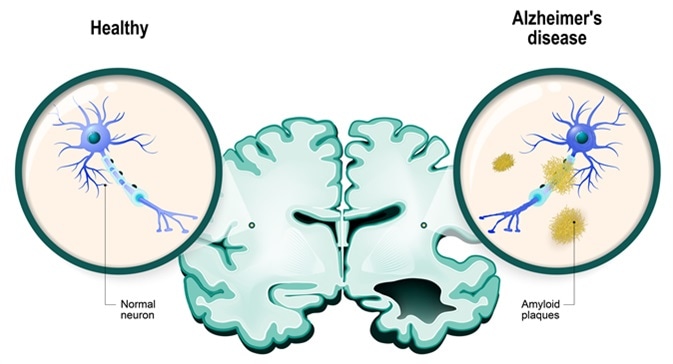One of Our Most Devastating Diseases Might Have A Cure
By Rishi Ganesh
Over 6 million people in the United States and around 35 million people worldwide have Alzheimer’s disease1. Affecting nearly 1 in 9 people over the age of 65 and doubling every five years past this threshold, it is a significant cause of death for many of our elderly. However, the Institute of Aging Research may be closing in on a way to save millions of lives, renewing the minds of seniors and preventing this increasingly destructive disease.

But to understand how Alzheimer’s is being cured, first we have to understand how it works. Alzheimer’s disease is a form of dementia, slowly and progressively destroying neural connections in the brain. As these connections are destroyed, the symptoms of Alzheimer’s become more and more apparent. Cognitive function decreases, making it difficult to do simple tasks, drastically increasing rates of memory loss, and mood and behavioral swings. Eventually, this degradation of neural pathways leads to death, not directly from Alzheimer’s, but from the complications it causes.2
So what exactly causes Alzheimer’s disease?
Alzheimer’s disease is caused by the buildup of unwanted proteins, which cause the blockage and eventual destruction of neural pathways in the brain. At a younger age, these proteins will be continually “cleaned” through a process known as chaperone-mediated autophagy, or CMA. In fact, this loss of cleaning contributes significantly to most, if not all neurodegenerative diseases, according to Dr. Ana Maria Cuervo of the Institute of Aging Research. Dr. Cuervo and her team are searching for a way to reverse the deterioration of this cleaning process, allowing them to not only slow or even stop Alzheimer’s, but other neurodegenerative diseases.3
The protein receptor LAMP-2A in our bodies allows us to undergo the CMA process. The more of these receptors we have, the more efficient the CMA process will be. As we age, though, these receptors eventually go bad or die out. The more of these that die out, the less efficient and more problematic CMA becomes. Eventually, at a certain threshold, the CMA process will not be efficient enough to prevent buildup. This is how Alzheimer’s forms.

The drug in development is called CA, and might be our best hope yet against Alzheimer’s.
So how does CA work? It’s actually extremely simple. Remember that LAMP-2A receptor? All CA does is keep them alive or provide the tools to increase LAMP-2A numbers. Since more of these receptors equals less chance at neurodegenerative disease, CA looks like it may provide the best chance as a preventative drug for those at risk. However, the risk factors for Alzheimer’s aren’t fully discovered yet, making identification the biggest obstacle to the CA drug. According to the CDC, what is known about risk factors is that age and family history are the two most correlative indicators for Alzheimer’s, but anything from diet to education could very well affect the chances for Alzheimer’s.
In any case, CA is the newest rendition of a possible way out of a disease that kills more than breast cancer and prostate cancer combined. Alzheimer’s has only gotten worse during the ongoing pandemic, with deaths from Alzheimer’s and other neurodegenerative diseases increasing by 16%, with hospital capacity forcing 11 million people into unpaid care for Alzheimer’s patients who are relatives or friends. CA is our best step towards ridding this world of a disease that would be better off as one of its symptoms: forgotten.
Sources: 1 https://www.alz.org/alzheimers-dementia/facts-figures
2 https://www.cdc.gov/aging/aginginfo/alzheimers.htm
3 https://www.sciencedaily.com/releases/2021/04/210422150402.htm